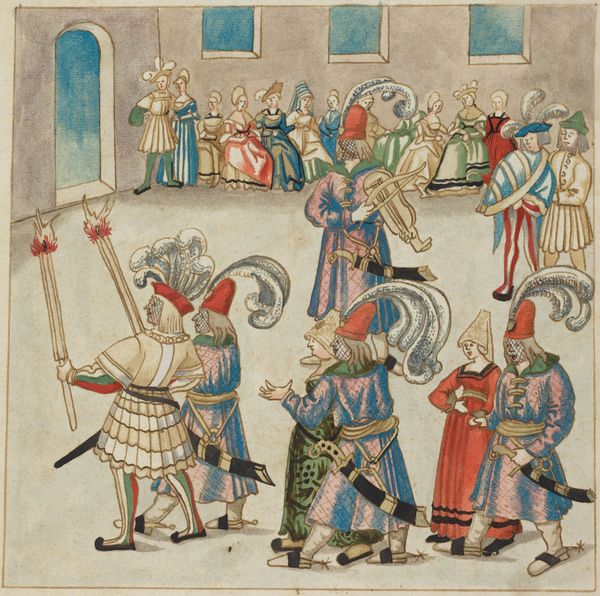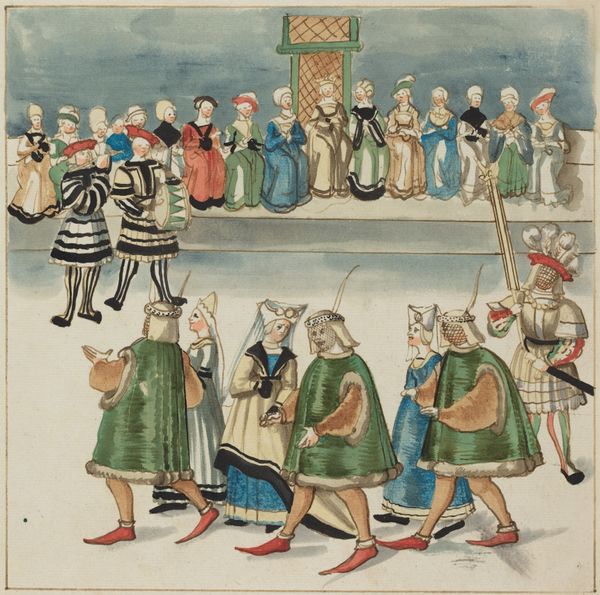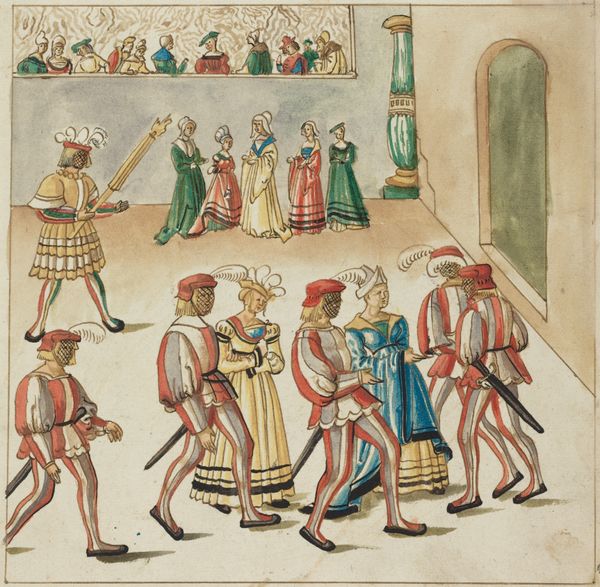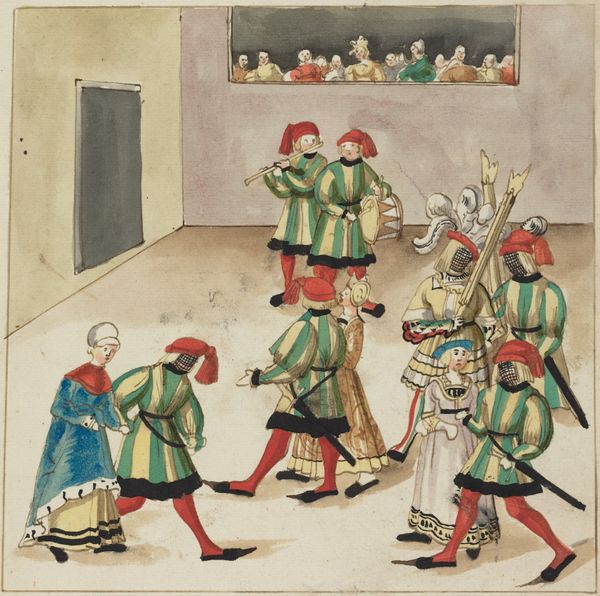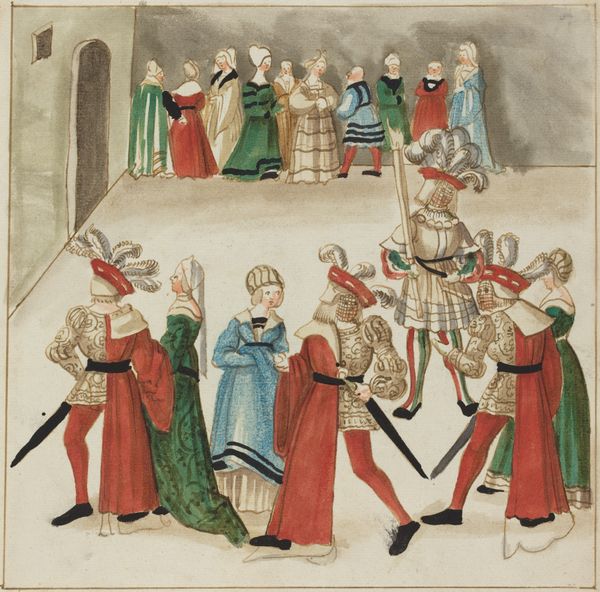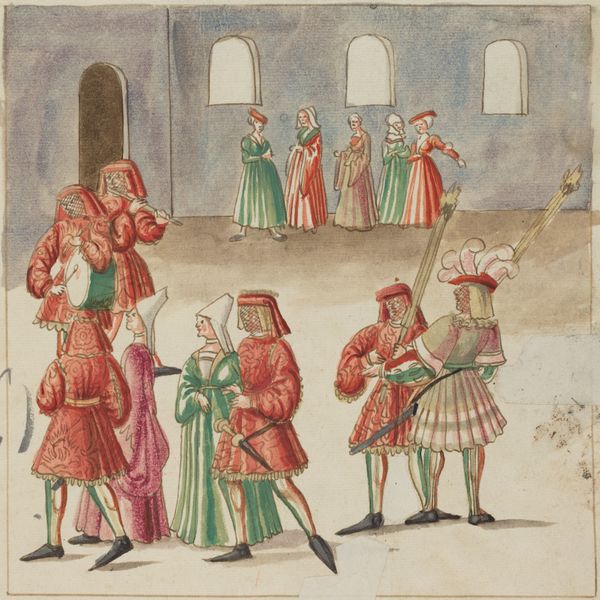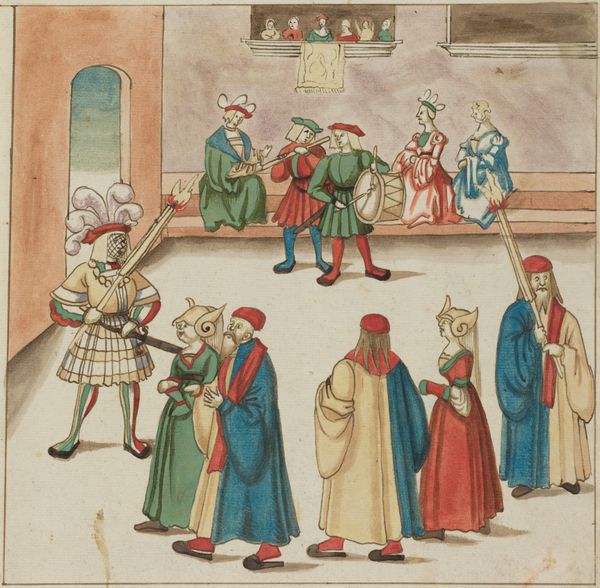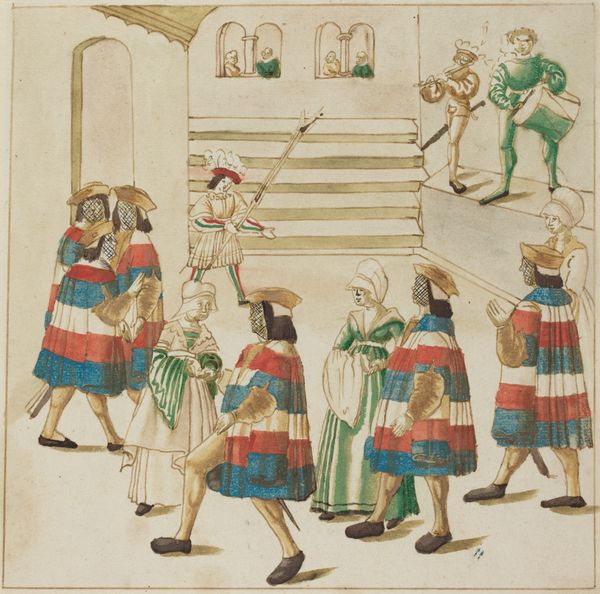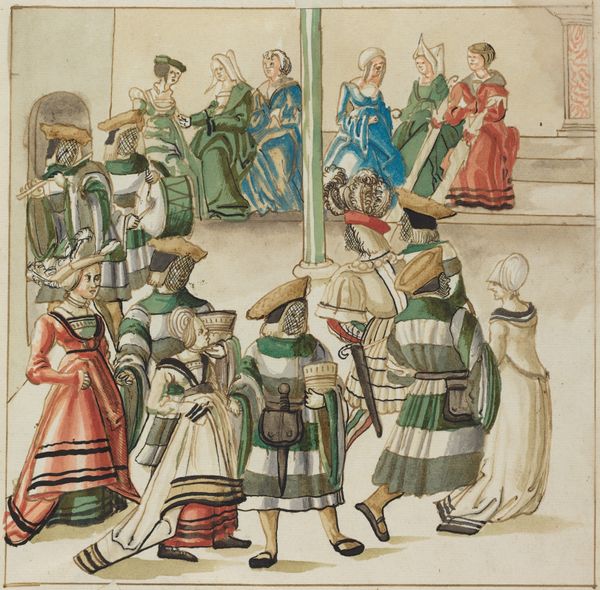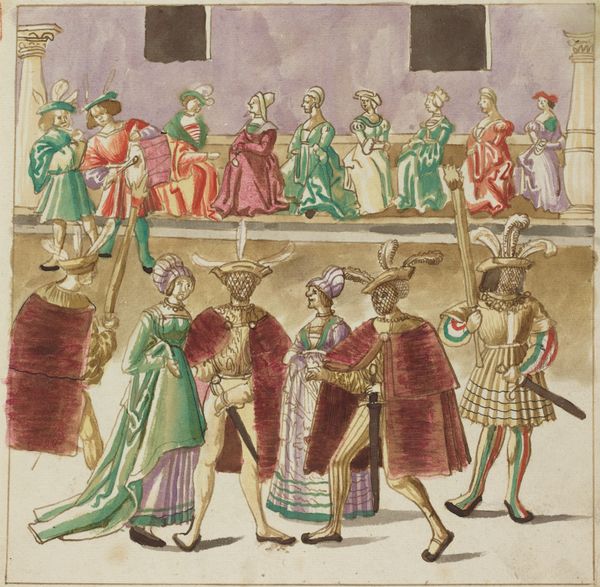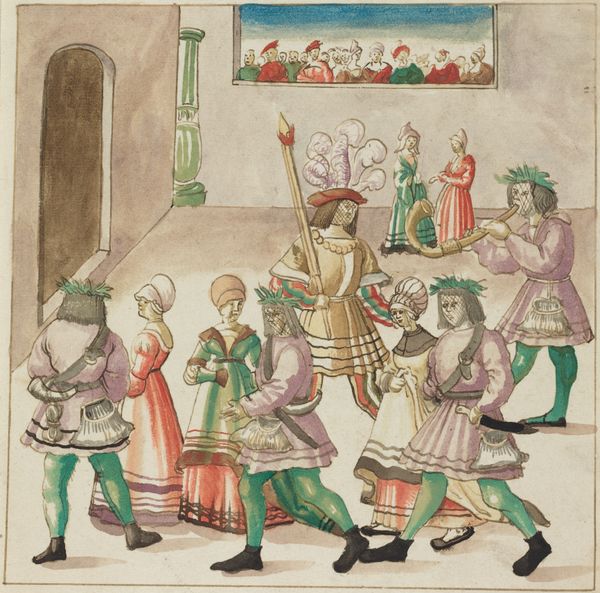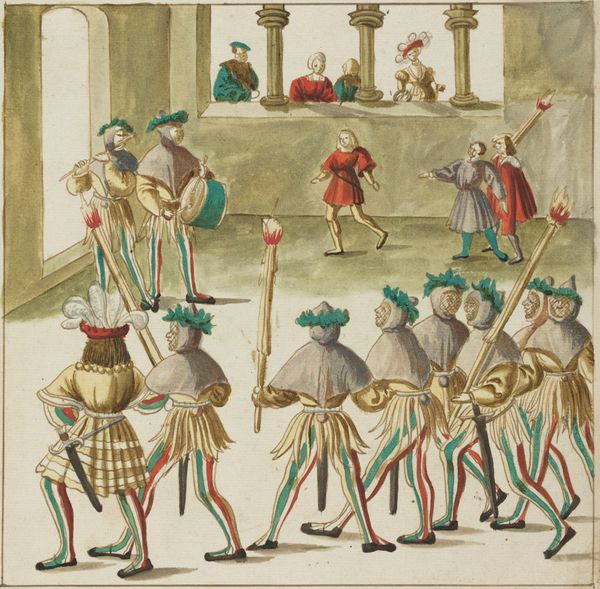
drawing, coloured-pencil, tempera
#
drawing
#
coloured-pencil
#
tempera
#
figuration
#
coloured pencil
#
genre-painting
#
history-painting
#
italian-renaissance
Dimensions: image: 23.2 x 23.9 cm (9 1/8 x 9 7/16 in.) sheet: 34.1 x 26.4 cm (13 7/16 x 10 3/8 in.)
Copyright: National Gallery of Art: CC0 1.0
Curator: Here we have "Masquerade," a drawing rendered circa 1512 to 1515. It’s an intriguing Italian Renaissance piece created using tempera and coloured pencil. What strikes you initially? Editor: The texture. Look at the hatched lines making up the clothing and the figures’ peculiar netted masks. The way the color is applied is really striking - this almost feels like a textile design draft more than high art. Curator: It is, isn't it? The Renaissance witnessed a fluidity between art forms, and drawings like this were vital in shaping courtly spectacle. I think it's helpful to understand this wasn’t just a depiction, but part of the performative culture of the era, shaping identity and power dynamics. Editor: Precisely. Consider the colored pencils and tempera—accessible materials shaping elite representation. The materials belie the actual labor—whose hands actually applied the color here? Was this artisanal production reflecting broader manufacturing happening across the continent? Curator: Good points. Genre and history painting often blur lines in these festive scenes. The costumes, clearly signalling status and perhaps specific allegiances, offer valuable social context. Notice how some figures directly engage with others, while others remain as audience to the drama. Editor: And the architectural backdrop... almost like a stage set. It is fascinating how consciously constructed the space seems to emphasize particular narratives. Did the materials or pigment choices factor into the desired outcome? Did that affect visibility for spectators at the time? Curator: We see art reinforcing social norms but also allowing for subversion through costume. The masquerade was an opportunity for social mobility through the adoption of disguise, a point often utilized to signal dissent. Editor: It feels inherently performative, even in a still image. I like thinking about the original crafting of those costumes. The material reality underpinning all that representation. Curator: Absolutely. These costumed performances reflected power structures and court life. I appreciate how your perspective really anchors our understanding in the physical processes behind this art object. Editor: It reminds us that images, even of ephemeral events like a masquerade, still leave traces of the makers' labor. A masquerade, by its very nature, blends visibility and obscurity—I think our discussion mirrored that interplay nicely.
Comments
No comments
Be the first to comment and join the conversation on the ultimate creative platform.
